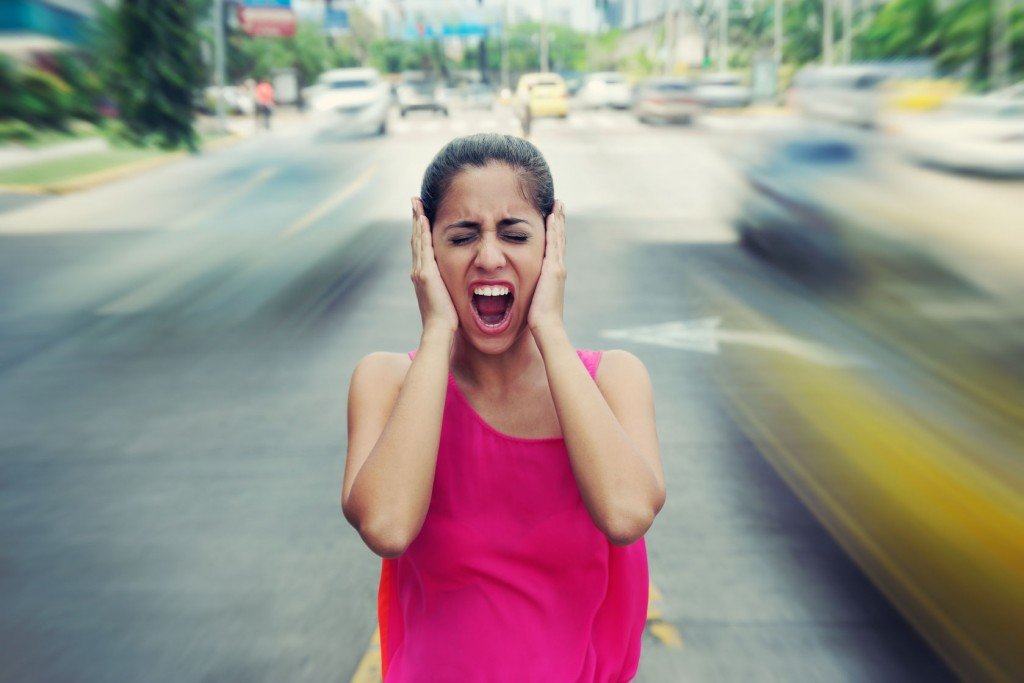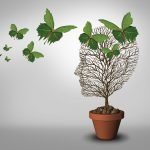Fred Lisanti, ND, LAc
People with an anxiety disorder are 3 to 5 times more likely to go to the doctor, and 6 times more likely to be hospitalized for psychiatric disorders than those who do not suffer from anxiety disorders.1 By 1990 the cost already constituted almost one-third of the United States’ total mental health bill, according to an analysis of data from the National Comorbidity Study.2 Anxiety can be attributed to a long list of causes and reactions which are treated in only about one-third of those who suffer, making many believe that the above number of those afflicted could actually be much higher. Staggering, considering that there are many ways to “treat the cause” in-house and to educate our patients (docere) as to what physical signs to look out for. So what are they and what can be done? Anxiety can manifest in many different ways and for many different reasons. It can be powerful enough to cause great struggle to simply get out of bed in the morning or to cause constant shaking, as if one had just consumed 2 cups of coffee.Our practice is in the rural suburbs of New York City. The majority of our clients is comprised of “white collar hustlers,” or better known as professionals who just can’t slow down, even when they want to. Common presentations include feeling “overwhelmed,” “stressed out,” or the more precarious “burnt out.” It is with noble intent. Who doesn’t want to be successful in his or her work and have a fulfilling life? Unfortunately, our lives have been “filled” up with modern mechanisms which promise convenience, but translate into inefficiency and more time-consuming work. It’s no wonder that anxiety disorders are the “most common mental illness in the U.S., affecting 40 million adults…age 18 and older (18% of the U.S. population),” according to the Anxiety and Depression Association of America (ADAA).1 I can attest that this is endemic to cosmopolitan areas, where speed rules and productivity statistics are sacrosanct.
Common Symptoms & Top Diagnoses
A checklist of some common anxiety symptoms includes:
- Irritability
- Feeling restless or “on edge”
- Headaches
- Muscle tension, trembling
- Difficulty concentrating
- Tachycardia
- Dyspnea
- Dyspepsia
- Trouble falling asleep or staying asleep
- Headache
- Sweating
- Fatigue
When symptoms become chronic, patients are often referred to a clinical psychiatrist, and leave with a diagnosis in hand.
- The ADAA lists the following as some of the top diagnoses:
- GAD (General Anxiety Disorder)
- OCD (Obsessive Compulsive Disorder)
- Panic Disorder
- PTSD (Post-Traumatic Stress Disorder)
- Social Anxiety Disorder
- Phobias
- Major Depression
Now What?… 3 Simple Strategies For Reducing Anxiety
For those busy clients of mine who value their time, I offer 3 simple strategies that I’ve found to be efficient, as well as clinically effective. Most of these patients experience immediate relief and reduction in most or all their symptoms, often within a few days time. Those with chronic conditions also experience improvement, albeit more gradually. In due course, most symptoms decrease to the point where even prescription medications can be significantly reduced or eliminated under the supervision of their psychiatrist.
Breathing: When clients initially consult with me, the first thing we do is discuss breathing and the physiological impact of chronic stress on respiratory patterns. We all know that the sympathetic nervous system is triggered in stress, leading to shallow breathing. When people are nervous or worried, their breathing is not only shallow, but also too fast and more situated in the chest than in the belly. Shallow breathing is problematic enough, but actual breath-holding can also occur, which happens without people realizing it. “Chronic breath holding and effortful breathing are not healthy because the muscular effort, coupled with the effects of stress on the nervous, hormonal, and immune systems, can impair both physical and psychological function,” says Alan Fogel, PhD, Professor of Psychology at the University of Utah in Salt Lake City. At our clinic we teach patients to locate their diaphragm, and focus on “less chest” and more “belly breathing.” It’s possible to change how you feel, and even how your mind is working, by slowing down to a gentle pattern of 4 to 6 breaths per minute. That’s what we aim for.
Auricular Acupuncture (ear acupuncture): This is another simple strategy we teach that has shown great promise for our patients. In a 2001 landmark study, published in Anesthesia and Analgesia,3 2 researchers from the Yale University School of Medicine – Drs Shu-Ming Wang and Zeev N. Kain – assembled a group of 55 patients for a blinded, randomized controlled trial to ascertain whether auricular acupuncture could decrease preoperative anxiety. Subjects who received acupuncture at the Shen Men point experienced profound changes in their behavioral anxiety levels – an effect that, the researchers theorize, could help reduce the levels of pain and stress in patients undergoing surgery. A more recent 2011 study, published in the Journal of Research and Medical Sciences, concluded that “Auricular treatment methods were also effective in decreasing anxiety in preoperative patients.”
Shen Men (aka Heaven’s Gate or Opening to the Spirit) is a common and useful point that is sometimes referred to as a “speed point,” inasmuch as it supports and strengthens the effects of other points as well. Shen means mind, spirit, consciousness, and Men means gate, door, entry. It is located on the upper, posterior third part of the inner ear, near the inferior lateral wall of the triangular fossa. This point calms the spirit, hence is useful in convulsions, sedation, anxiety, depression, worry, sleeplessness, impatience, shock, addiction withdrawal, restlessness, dysphoria, and hysteria. After needling our patients, we teach them how to locate the point. We send them home with acu-magnets or ear seeds, where they can comfortably apply the auricular therapy either daily for acute episodes, or regularly for chronic conditions.
Botanical Sedation: As naturopathic doctors we have a rich history of herbal wisdom from which to glean. Philosophically speaking, all of our patients walk out of the clinic with some kind of herbal knowledge. For our fast-moving clientele, they appreciate the medicines of herbal allies which they can conveniently keep in their briefcases and work totes as tinctures. Tongue and pulse diagnosis is always used in the selection of remedies, prescribing on constitution and energetic needs rather than using a “one size fits all” approach. Some common remedies we turn to include:
Valerian (Valeriana officinalis) –
For anxiety combined with insomnia
Chamomile (Matricaria chamomilla) – Constituents have been shown to bind to similar brain receptors as the prescription drug, diazepam
Hops (Humulus) – Should not be used in any case presenting with depression
Lemon Balm (Melissa officinalis) – A good way to unwind from the day
Passion Flower (Passiflora) – Specific for nervous restlessness
Kava (Piper methysticum) – Specific for anxious depression. The Department of Psychiatry at the University of Melbourne uses kava extensively with their patient population.
One of the beautiful aspects of being a naturopathic doctor is the art of medicine. Oftentimes, we can get lost in the research, forgetting that simplicity is often the best remedy. When combined with proper education and a commitment to “do no harm,” even the worst afflictions can be addressed. Stimulating the body’s innate healing intelligence is a cornerstone of our philosophy. When applied with compassion and grace, the therapeutic effects can be surprisingly efficient.
 Fred Lisanti, ND, LAc is the founding director and attending doctor at Integrative Med Solutions, Westchester County, New York’s premier natural health center. Dr Lisanti specializes in the treatment of anxiety, depression, and all forms of mental illness. In his leisure time you can find him strolling the forest trails of Westchester with his family, and playing percussion wherever he can.
Fred Lisanti, ND, LAc is the founding director and attending doctor at Integrative Med Solutions, Westchester County, New York’s premier natural health center. Dr Lisanti specializes in the treatment of anxiety, depression, and all forms of mental illness. In his leisure time you can find him strolling the forest trails of Westchester with his family, and playing percussion wherever he can.
References
- Anxiety and Depression Association of America. Facts & Statistics. ADAA Web site. http://www.adaa.org/about-adaa/press-room/facts-statistics. Accessed November 15, 2013.
- Greenberg PE, Sisitsky T, Kessler RC, et al. The economic burden of anxiety disorders in the 1990s. J Clin Psychiatry. 1999;60(7):427-435.
- Wang SM, Kain ZN. Auricular acupuncture: a potential treatment for anxiety. Anesth Analg. 2001;92(2):548-553.





